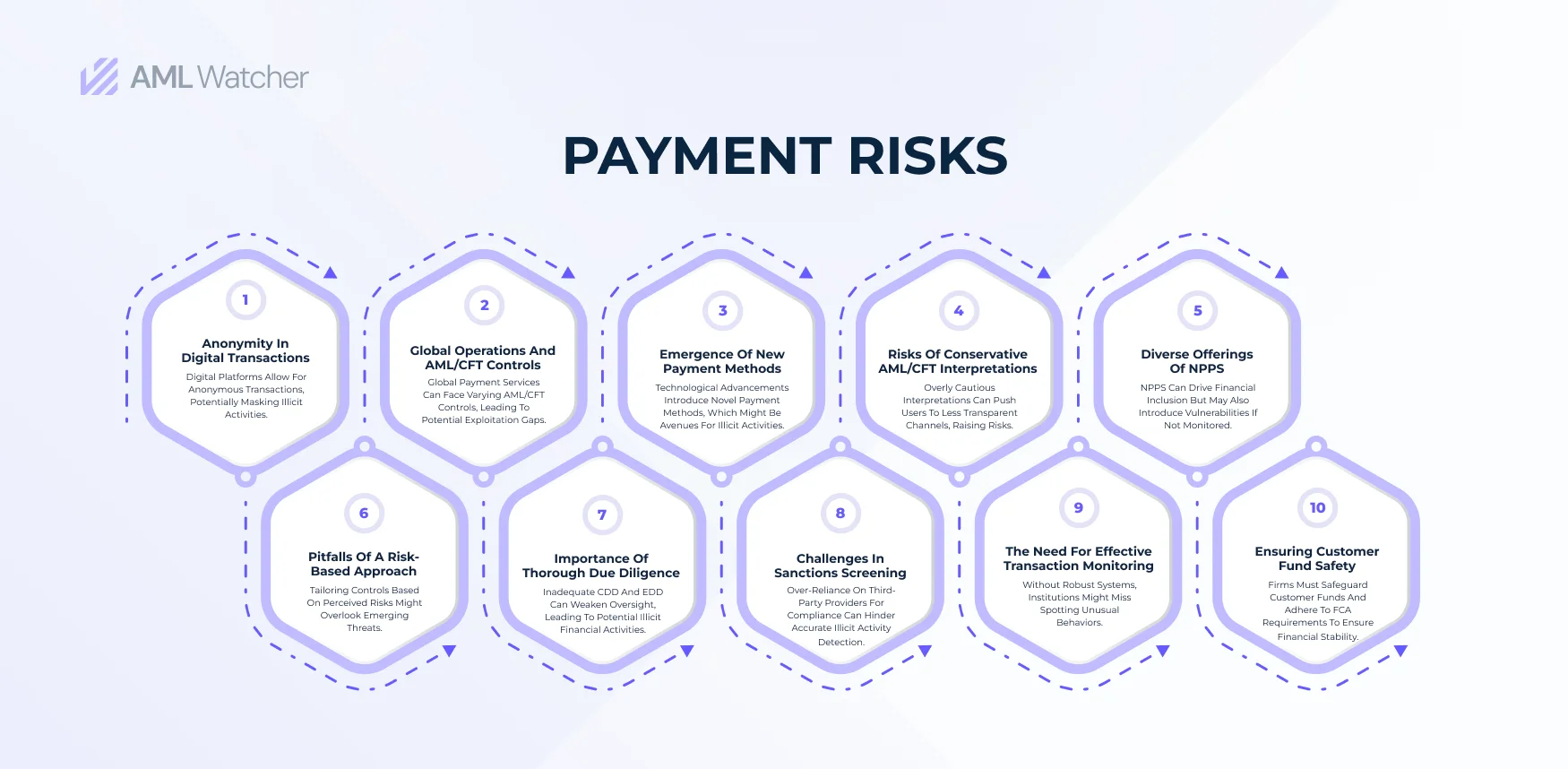
10 Payment Risk to assess for your AML strategies
In the pursuit of achieving global financial inclusion, the payments industry has been galvanized to introduce sophisticated and innovative solutions to cater to diverse global markets. Such efforts accentuate the industry’s commitment to ensuring that financial services are accessible and equitable for all, ensuring fraud prevention. According to McKinsey & Company, In 2016, worldwide payments contributed to 34% of total banking earnings, a rise from 27% in just the preceding five years. Over the subsequent five years, the growth rate is projected to be 7% annually, positioning the payments sector to reach a valuation of $2 trillion. Hence, payment service providers, card issuers, and transaction processors make up our financial system of life. However, as the world accelerates towards a cashless future, new challenges are arising.
While cashless transactions offer enhanced transparency in financial dealings, opportunists frequently seek digital avenues to circumvent these measures. Recent responses from regulators such as the FCA highlight the increasing need for tighter controls within the payments sector. As you keep reading the blog, you will get a better grasp on critical payment risks that require leading AML processes, ensuring a safe and transparent financial future for all.
Payment Risks
As per research conducted by the University of Hong Kong and the recommendations proposed in the letter to the Chief Executive Officer by FCA, the following are the risks related to payment institutions: –
Non-face-to-face Relationships and Anonymity:
While mobile and online payments make it convenient for people to reduce reliance on face-to-face interactions, it gets worse to maintain transparency, thus facilitating the prevalence of illicit activities as well.
The risk of financial fraud varies based on the nature of the business and the risk mitigation strategy in place.
Global Reach
Payment services that operate globally come across varying levels of AML control as per the jurisdiction differences. If a business operates in an area with weak AML controls, there must exist a potential gap for bad actors to conduct money laundering.
New Payment Products and Services (NPPS):
With any other advancement that makes its way into the niche of AML screening, evolution in technology, if not fully understood, leaves gaps for potential avenues of financial fraud.
Quite Conservative Interpretations:
Financial institutions with a conservative or casual approach might exclude potential customers pushing users towards highly less transparent processing, increasing overall risks.
Unseen Drawback of Using a Risk-Based Approach:
While a Risk-Based Approach (RBA) tailors the controls based on the perceived risk level, it’s not foolproof. Some risk mitigation measures might inadvertently introduce new vulnerabilities. For instance, focusing too much on one perceived high-risk area might divert attention from other emerging threats.
Customer Due Diligence CDD and Enhanced Due Diligence EDD
Inadequate CDD and EDD approaches cause payment organizations to not thoroughly grasp the risk characteristics of their clientele, reducing the effectiveness of continuous oversight. This might lead to an excessive dependence on observing transaction patterns to identify illicit financial activities and funding for terrorism.
Sanctions
For payment organizations, a prevailing area of attention is regulatory compliance in which the process of sanctions screening is imperative. Relying too much on external service providers for compliance screening can complicate creating accurate lists with relevant identities, making the detection of illicit financial activities less precise.
Transaction Monitoring
Not implementing a robust system to observe transaction patterns with suitable guidelines and criteria might result in numerous incorrect alerts, weakening the capability of payment institutions to spot unusual behaviors.
Inadequate Safeguarding of Customer Funds
Payment institutions may not be adequately ensuring the protection of their customers’ funds. The absence of daily internal and external reconciliations, combined with potential non-compliance with FCA’s requirements for accounts holding pertinent funds, poses significant risks to both the financial stability of the firm and the security of customer assets.
Addressing the Risks
As per the requirements and recommendations of FCA, AML Watcher offers a comprehensive suite of tools that manage money laundering risks, including robust due diligence processes tailored for evolving threat landscapes. As businesses expand, especially in the realm of global operations, AML Watcher ensures the maintenance of effective anti-money laundering controls. Recognized as the most trusted third-party provider for sanctions screening, risk scoring, and due diligence, AML Watcher stands out in its commitment to safeguarding businesses against financial crimes. For more information or to explore how AML Watcher can benefit your operations, kindly contact us.
We are here to consult you
Switch to AML Watcher today and reduce your current AML cost by 50% - no questions asked.
- Find right product and pricing for your business
- Get your current solution provider audit & minimise your changeover risk
- Gain expert insights with quick response time to your queries



